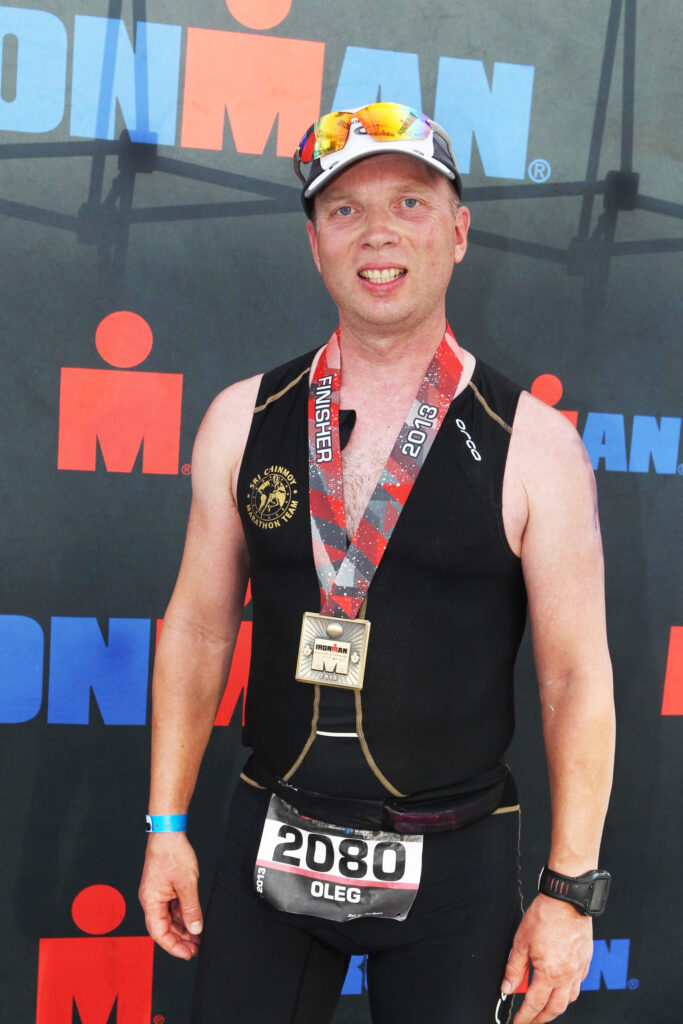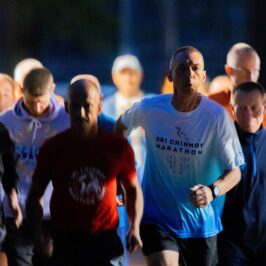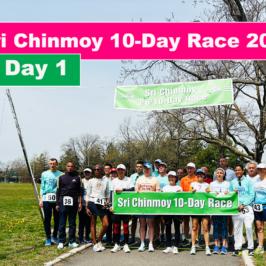Once again I had a chance to experience a breakthrough theory in my life – this time breakthrough in swimming! And I was very happy indeed. My initial data in mid-January was swimming 200-300 m intervals with a 2: 17-2: 26 / 100m pace. A month later I was already swimming 3.5 km at the pace of 2: 12 / 100m. Two months later after the beginning of serious training there were several swims 7 km long at the pace of 2: 03 / 100m. Two hours of training in the swimming pool has now become an ordinary thing to do in my life. I am very happy with my progress – and this is only the beginning!
The Challenge
 I have a tradition that around New Year’s Eve I sit down to meditate, so that with a calm mind and deeper perception of the world I can identify goals and projects for the coming year. Even before that time this year, I realized that I will take a break in my starts for the 3100-Mile Race. Also, even before the new year, the challenge of a marathon swim of 16 miles in Zürich began to loom large. Once before I thought about it , but I was faced with the fact that I am an average swimmer. And here – 16 miles of swimming! But now, in the New Year’s meditation, it became quite clear to me that I accepted the challenge … So this year is year of water and swimming for me.
I have a tradition that around New Year’s Eve I sit down to meditate, so that with a calm mind and deeper perception of the world I can identify goals and projects for the coming year. Even before that time this year, I realized that I will take a break in my starts for the 3100-Mile Race. Also, even before the new year, the challenge of a marathon swim of 16 miles in Zürich began to loom large. Once before I thought about it , but I was faced with the fact that I am an average swimmer. And here – 16 miles of swimming! But now, in the New Year’s meditation, it became quite clear to me that I accepted the challenge … So this year is year of water and swimming for me.
From the middle of January, my intense training in the pool began. And … I panicked a little. My arms were getting tired quickly, the pace, already slow, dramatically decreased over the span of my short swim … I began to ask my swimming friends’ advice, some of who already have the experience of swimming Zürich Lake and even the English Channel. From conversations with them, a certain sense of calm has arrived – one must train with right attitude, work on weak points and move towards the goal.
I must say that in 2013 I already had a swimming experience when I prepared and participated in the full Ironman Triathlon. Then, in the competition itself I swam 3.8 km in 1:12:57 (average pace 1: 48 / 100m). In preparation, I received considerable help from the Total Immersion approach. I remember that during my longest training I swam 3.5 km uninterrupted, while the pace decreased from 2:06 to 2: 16 / 100m. For this swim, however, I have to spend about 12 hours in the water (limit in Zürich) and to swim 26 km!
Fundamentals of super long races
Despite the new field of activity, the main fundamentals remain the same as before: motivation, right attitude in difficult times and energy. And if earlier you already solved similar tasks in other areas, then it is incomparably easier to master a new one. Despite the fact that in swimming there are many unique features, self-transcendence and the search for an inexhaustible source of energy remains all the same. So, when I get tired now, or the sound of the flowing water in my ears starts to bother me, I turn to my tested techniques as in long distance running. The inner cry, support for the body with proper nutrition and concentration on key points in techniques work wonderfully here too!
Swimming techniques
In swimming, technique plays a critical role. But the good news is that this technique can be mastered and practically brought to the automation state. Here I see some difference with running, where it is almost impossible to change the style in long distance running (and concentrate on it). I mentioned this in my report from the 3100-Mile Race report – The Running Style
The goal in overcoming 26 km in open water (and it could be all 28K) sets out special requirements for training and the technique itself. First of all – there should be enough energy to last all 12 hours. This means you need to achieve maximum efficiency in swimming. In other words, to reach maximum speed/pace which can be maintained for a long time with minimum effort. For such definition of the problem The Total Immersion Approach provides the best solution. Its’ main points are: correct body balance, minimal resistance and effective propulsion. I will only say that by constantly improving the technique, I managed to significantly increase the mileage in training together with the average pace (currently I swim about 23 km (14 miles) per week). And it seems like this improvement has no limit :)
Fine Tuning
You can say that at the moment the foundation in my swimming technique is built. I recently bought swim heart rate monitor and it turned out that when I use my legs and swim in full coordination, my pulse immediately increases by 15-20 beats per minute. And when I swim with a pull float between my legs, working with hands only, I swim faster and with lower pulse. It seems that my runner’s legs played a role here, they are a bit too heavy for swimming. The pull float raises them and makes the whole body more horizontal in the water, which means it significantly reduces the resistance. Now I am working on my legs not violating the horizontal line of the body, and not requiring too much energy. I call it fine tuning.
The water has many qualities. Swimming is definitely a less stressful sport compared to running. On the other hand, when you are tired and your body line comes to a crooked “z” – running forgives your fatigue much more than water. In water, because of the disruption of the slender horizontal line of the body, the speed drops dramatically.
In general, everything is very interesting! I am very optimistic. Once again, I am fascinated by breakthrough theory, which is based on the internal search for hidden reserves.
Stay tuned!
Stutisheel the waterfowl.
p.s. Part One of the Breakthrough Theory can be found here.






Leave a Reply